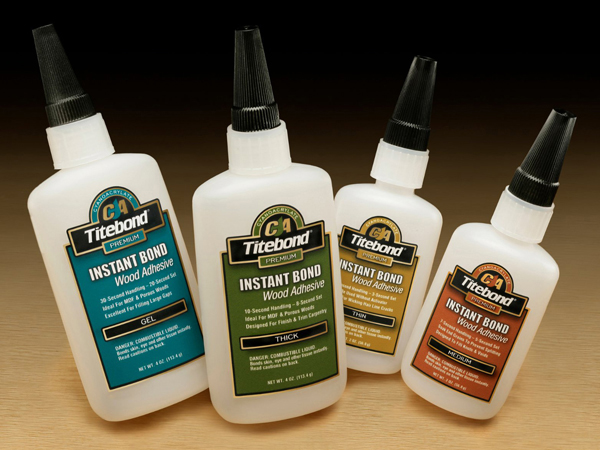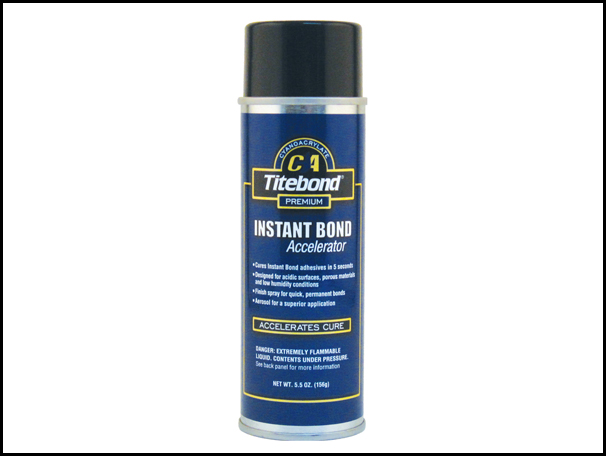
I recently went to use a bottle of CA (cyanoacrylate) glue that I had had on hand for, admittedly, a while. It was still viscous and dispensed well, but it had no bonding strength – it didn’t hold anything together! I’ve had other glues harden in the bottle in the past, so I knew they were past their prime, but I was a little surprised at this one. How do you tell the shelf life of CA glues? – Clayton Jacobs
Tim Inman: I have personally not experienced this, but who’s to say. I think the answer to your question should come from one of the manufacturers.
Bob Behnke: Here’s the short answer: If the CA glue is still liquid, then it’s still active and able to cure. The longer explanation: CA glues are made up of single molecules of cyanoacrylate. The glues harden when their molecules react to moisture in the air and link together (polymerize) to form long chains. Thinner CA glues tend to react faster than the thicker adhesive due to wetting and spreading on the substrate, but thickeners used to formulate various viscosities shouldn’t affect performance. Manufacturers add inhibitors to the glue to keep it from reacting (and thereby curing and hardening) in the bottle. For most cyanoacrylate adhesives, the inhibitor is an acid. An acidic inhibitor works fine when you apply it to most surfaces (e.g., metal or ceramic) because they are typically alkaline (the opposite of acidic), which neutralizes the acid and enables the reaction to proceed. On the other hand, some woods, such as oak or maple, can contain surfaces with tannic acids that keep the acidic inhibitor from neutralizing – and either slow down or prohibit the reaction altogether. In those cases, you want to use an accelerator or activator to coax the reaction along. The activator or accelerant neutralizes the acid, and the reaction proceeds. Depending on the species of wood you are gluing or the time of year the tree was cut, the tannic acid concentration in the wood can vary considerably. If gluing wood with CA glues, it’s imperative to keep an activator handy.
The shelf life of CA glue depends on the amount of inhibitor in the formulation. (Titebond adds a higher amount than most formulations, so our product will last a minimum of two years.) Higher levels of inhibitor, though, can require you to use an accelerator in a higher percentage of applications. Also, moisture in the air kicks off the curing reaction, so storing in a low-moisture environment can increase the useful life of the CA glues. Storage in a freezer where moisture levels in the air are very low can allow product usability for up to 10 years. Be sure to squeeze out as much air from the bottle as you can before replacing the cap. As stated above, as long as the adhesive is liquid, the product is still good to use.
(Bob Behnke is the technical service manager for Titebond products.)






